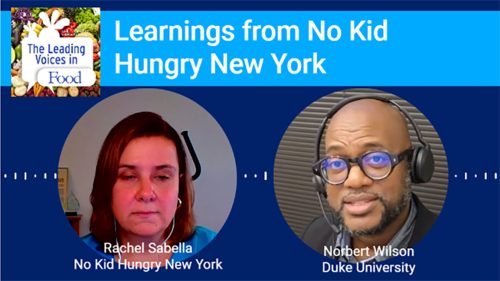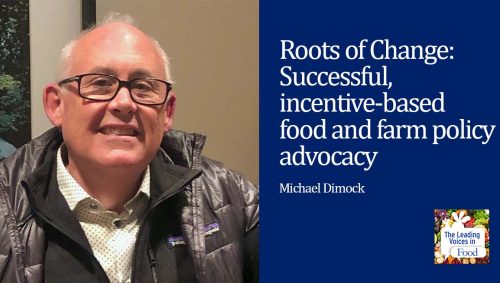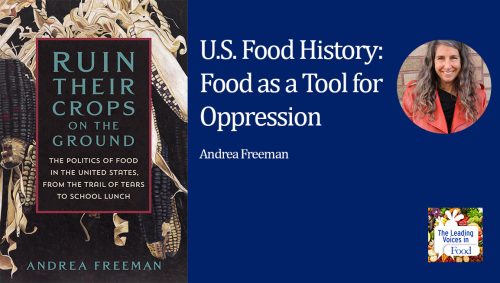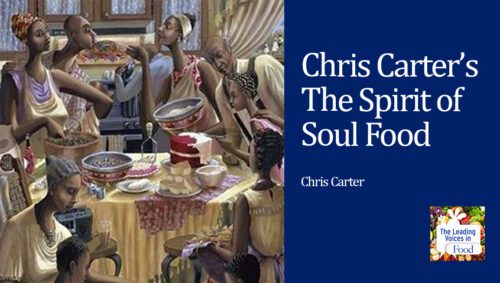The Leading Voices in Food
E234: White Burgers, Black Cash – a history of fast food discrimination
Fast food is part of American life. As much a part of our background as the sky and the clouds. But it wasn’t always that way, and over the decades, the fast food landscape has changed in quite profound ways. Race is a key part of that picture. A landmark exploration of this has been published by today’s guest, Dr. Naa Oyo A. Kwate. She is an Associate Professor in the Department of Africana Studies and the Department of Human Ecology at Rutgers University. Her book, recently published, is entitled White Burgers, Black Cash: Fast Food From Black Exclusion to Exploitation. The book has been received very positively by the field. And was recently named the best book in the field of urban affairs by the Urban Affairs Association.
Subscribe: Apple Podcasts | TuneIN | YouTube Music | SoundCloud | PocketCasts | Radio Public
Tags: Equity, Race & Food Justice | Food Industry Behavior & Marketing | Food System Narratives |
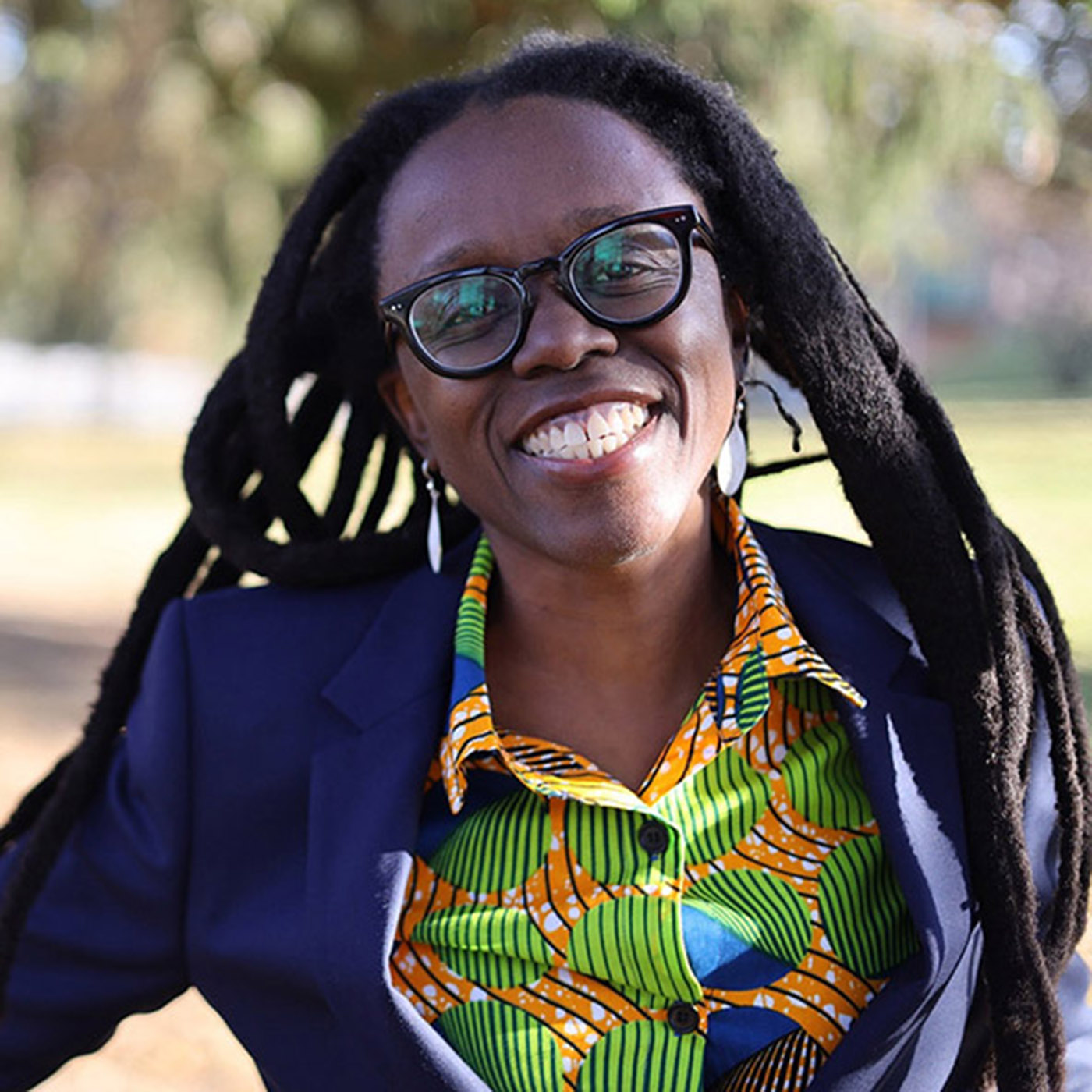
Naa Oyo A. Kwate is Associate Professor, jointly appointed in the Department of Africana Studies and the Department of Human Ecology at Rutgers. A psychologist by training, she has wide ranging interests in racial inequality and African American health. Her research has centered primarily on the ways in which urban built environments reflect racial inequalities in the United States, and how racism directly and indirectly affects African American health. Kwate’s research has been funded by grants from the National Institutes of Health and the Robert Wood Johnson Foundation, and by fellowships from the Smithsonian Institution, among others. Prior to her first major book, White Burgers, Black Cash: Fast Food from Black Exclusion to Exploitation, she published the short work Burgers in Blackface: Anti-Black Restaurants Then and Now, which examines restaurants that deploy unapologetically racist logos, themes, and architecture; and edited The Street: A Photographic Field Guide to American Inequality, a visual taxonomy of inequality using Camden, NJ as a case study. Kwate has been a National Endowment for the Humanities Fellow at the Newberry Library, and has received fellowships from the Smithsonian Institution, the European Institutes for Advanced Studies, and elsewhere. She is currently writing a book investigating the impact of corner liquor stores in Black communities from 1950 to date.
Interview Summary
I was so happy to see your book because people have talked about the issue of race off and on in the field, but to see this kind of scholarly treatment of it like you provided has been really a welcome addition. Let me start with a general question. Let’s begin with the fast food situation today and then rewind to where it began. Are there patterns to where fast food restaurants are located and who fast food is marketed to?
Absolutely. There’s quite a bit of research, and you just alluded to the work that’s been done in the field. There’s a lot of research that shows fast food is most dense in African American communities. Not every study has the same finding, but overall that’s what the accumulated evidence shows. On the one hand you have the fact that Black communities are disproportionately saturated with these outlets. Then there’s also the case that apart from the physical locations of the restaurants, fast food is strongly racialized as Black in terms of how it’s portrayed to the public. It [Fast Food] relies on images of Blackness and Black cultural productions such as Black music for its marketing. These sometimes these veer into racial caricature as well. One of the things I talked about in the book briefly is the TV commercial character Annie who Popeye’s introduced in 2009. They basically created this Black woman that Adweek at the time was calling “feisty,” but it’s really just this stereotypical idea of the sassy Black woman and she’s in the kitchen frying up the chicken for Popeye’s. And actually, some of the language that was used in those commercials really evokes the copy on late 19th century and Aunt Jemima pancake mix packaging. It’s a really strong departure from fast food’s early days, the way that fast food is now relying on Blackness as part of its core marketing constructs.
I’m assuming that it follows from what you’ve been saying that the African American community has disproportionately been targeted with the marketing of these foods. Is that true of children within that community?
Research shows that in terms of fast food marketing at the point of purchase. There’s more – display advertising for example at restaurants that are in Black communities. And then there’s also been research to show, not in terms of the outlets themselves, but in terms of TV programming that there tends to be more commercials for fast food and other unhealthy foods during shows that are targeting Black youth.
How much of the patterning of the fast food restaurants is due to income or due to the amount of fast food consumption in these areas with many restaurants?
Almost none of it really. It’s not income and it’s not the amount of fast food that people are consuming. In fact, one of the main studies that led me to start researching this book, because I was coming to it from public health where there was a lot of research around the disproportionality of fast food restaurants. We actually did a study in New York City, some colleagues and we published it in 2009, where we looked at how fast food was distributed across New York City’s five boroughs. And restaurant density, we found, was due almost entirely to racial demographics. There’s very little contribution from income. So, the percentage of Black residents was what was driving it. That was the biggest predictor of where fast food was located. It wasn’t income, income made very little contribution and if you compared Black neighborhoods that were higher in income to those that were lower in income, they basically had about as much fast food exposure. Then if you compare them to white neighborhoods matched in income, Black neighborhoods still had more. So, it wasn’t income, it was race. There are other areas that were high in fast food density like Midtown and downtown Manhattan where you have commercial and business districts, transportation hubs, tourist destinations. So, you expect fast food to be in these really dense and kind of busy commercial areas, but the only residential space that had comparable density were Black and brown neighborhoods. The assumption that many people have is that, okay, well if it’s not income, then it’s probably demand. So probably fast food is just dense in those neighborhoods because Black people eat so much fast food. But again, the data do not bear that out, not just in our study, but in others. And in fact, apart from the study we did specifically on fast food, we did another study where we looked at retail redlining for a number of different kinds of retail sectors. And again, demand is not what situates, you know, where stores are or are not. And then when I got to this project, just digging through the archives, you find that until the industry really went in on targeted advertising to increase the numbers of visits that Black people were making to fast food restaurants and the average check size that they were spending, Black consumers were mostly using fast food as a quick snack, it wasn’t a primary place for meals. So it’s really the case that the restaurants proceeded the demand and not the inverse.
It is an absolutely fascinating picture. My guess is that what you’ve just said will probably come as a surprise to some people who are listening to this, not that fast food isn’t dense in particular neighborhoods, but that it’s particularly dense in neighborhoods by race just because people generally think that fast food is popular everywhere. So, let’s talk about why this occurred and dive a little more deeply into what your book does and that’s to provide a historical view on how and why this evolved. So, what did the early history look like and then what happened?
So, the book traces what’s basically a national story, but I focus particularly on certain cities like Chicago, New York and DC. But it’s tracing how fast food changed racially and spatially from the early 1900’s to the present. I break out that early history into what I call first and second-generation chains. So, they opened in urban and suburban areas respectively. The birth of the first generation fast food restaurants took place in what is termed the Nader of race relations in the US from the end of the Civil War to the 1930s. So, this is a time during which you see Plessy versus Ferguson, for example, ushering in legal segregation. Lynchings are at their worst. You have the destruction of Greenwood in Tulsa, Oklahoma. That’s taking place and other notable incidents and forces that were undermining Black life at the time. It’s during that context that the first generation restaurants are born. And so, these are burger chains like White Castle, that was the first actually big burger chain. People often assume it’s McDonald’s, but it’s actually White Castle in 1921. And then there are knockoffs of White Castle, like White Tower and Little Tavern, which was an East coast brand. And then there were also other restaurants that were not burger chains, but more like hot shops was more of a sit-down restaurant. And then you had Horn and Hardart, the outlets where they had auto mats. So, you know, this was kind of high tech at the time, but you would go in and the food was behind little glass compartments and you would put in your requisite number of nickels and then take out your little plate of food. These were all the restaurants that I’m calling first generation restaurants. So, you had quite a bit of diversity in terms of what they were serving, but they were all in urban centers. They were not franchised. They were corporate owned outlets and most importantly everything about them was white, whether figuratively in terms of who dined and worked there or literally in the architecture and the design and the name like White Castle. That veneer of whiteness was doing two things. On the one hand, trying to offer the promise of pristine sanitary conditions because this is a time when food production was rife with concerns. And then also it’s trying to promise a kind of unsullied social whiteness in the dining experience. So, first generation then leads to second generation fast food, which begins in the suburbs instead of the urban centers. Second generation fast food starts to grow in the early 1950s. These are the brand names that are most synonymous with fast food today: KFC, Burger King, McDonald’s. So, for example, Ray Crock launches McDonald’s as a franchise in the all white suburb of Des Plaines outside Chicago near O’Hare airport. And he set to fly over prospective sites looking for church steeples and schools, which to him were an indication of a middle class and stable community, but of course, racializing that as white. Because you could have Black neighborhoods with church steeples, but that was not where the restaurants were going. So, what ends up happening with second generation fast food is that it takes this theme of purity and shifts so that it’s not just the purity of simple kind of fuel for the working man, but instead the purity of white domestic space. And where first-generation restaurants targeted working adults, the second went after families and children. Fast food then becomes more than just food – it’s about fun. Those are the two key ways to think about the early history.
One could obviously find many, many, many examples of different racial groups being excluded from the economic mainstream of the country. For example, areas of employment, and my guess is that being excluded from the marketing applied to consumer goods and lots of other things. But do you think there’s something special about food in this context?
Oh, that’s a good question. It’s interesting because fast food. It’s food, but it’s more than that the way that fast food initially excluded Black people. One of the things I talk about in the early part of the book is James Baldwin going to a restaurant and trying to order a burger and being rejected and facing discrimination. And the idea that it’s not just that you can’t get a burger, it’s not the same thing as if you try to buy, I don’t know, a ham sandwich or something. But like what burger means something more than that, right? It’s bigger than a burger is Ella Baker said. Fast food is kind of like the closest thing we have to a national meal. It sort of occupies a special place in the heart of America and is symbolic of this quintessential all-American meal. And the notions of a good and simple life that we purportedly have in this country. So, it means more I think the way that fast food was positioned as something that was totally wrapped up in this exclusionary whiteness.
Your book traces the long pathway that fast food traveled going from exclusion in the beginning and then later exploitation. Can you describe a couple of the key turning points?
Well I would say that it wasn’t like a light sort of got switched on that caused fast food to shift abruptly from utterly excluding Black people to then pursuing them full throttle the next day. It was quite a long and bumpy pathway and really American retailers in general have continually had to discover Black consumers and the fact that they exist over and over. And then sort of trying to think like, oh, how do we reach them? We don’t understand them, like they’re this enigma kind of thing. Fast food was doing the same kind of thing. There was both what the industry was doing and then there were also pull factors that were causing fast food to be drawn into Black communities as well. There are a lot of turning points, but I would say if you start fairly early in the history, a key one was after second generation fast food got going. Where suburban fast food right, is trying to position itself as this white utopia. But almost immediately that notion was fraught and unstable because concerns quickly arose around teenagers. They were money makers but they were also rowdy. Their behavior, hot rodding and goofing off in the parking lot and so on, was off-putting to the adult diners. So, it became this difficult kind of needle to thread of like how are we going to track this consumer segment that’s foundational to the enterprise but do so under conditions that would keep them in line and not mess up the other potential revenue that we have going. As the kind of nuisance of fast foods became more pitched, municipalities began introducing ordinances to control fast food or even ban it. And that made the suburbs harder to get into or to maintain a foothold in. Corporations then start looking more at the cities that they were avoiding in the first place and the Black communities there that they had excluded. So that happens fairly early and then some other key turning points occur throughout the 1960s. Here we have urban renewal, you have urban rebellions taking place and during the late 1960s when these rebellions and uprisings were taking place, this is the time period when you get the first Black franchisees. Into the 1970s you have oil crises, then you have the burger and chicken wars as the industry called them in the 1980s. And this was referring to corporations battling each other for market share. So, all throughout the history there were different turning points that either accelerated the proliferation of fast food or sort of change the way the industry was looking at Black consumers and so on.
Now in some discussions I’ve heard of this issue off and on over the years from people who have looked at the issue of targeted marketing who have talked about how there was a period of time and you made this clear, when Blacks were excluded from the marketing and they just weren’t part of the overall picture of these restaurants. Then there was a movement for Blacks to be included more in the mainstream of American culture so that it was almost seen as an advance when they became included in the marketing. Black individuals were shown in the marketing and part of the iconic part of these restaurants. So that was seen as somewhat of a victory. What do you think of that?
It’s true and not true. I mean when fast food decided to finally start actually representing Black people in its marketing, I think that is important. I do think that the fact that they were finally making ads and conceiving of campaigns that saw Black people as part of the actual consumer base at which they were, yes, that that is important. But it’s also the case that corporations are never doing anything for altruism. It’s because they wanted to shore up their bottom line. So, for example, Burrell Advertising is the biggest African American ad shop based in Chicago. They get the McDonald’s account and so they’re the first ones to have a fast food restaurant account. They begin their campaign in 1971 and at that time, their advertising actually positioned Black families as regular people doing everything everybody else does and going to the restaurant and enjoying time together as a family and so on. And I think those kinds of images were important that they were creating them, but again, at the same time it was only the context in which Burrell got that account. The reasons why McDonald’s was reaching out to Black consumers was because, again, in the early 1970s white suburbs were becoming more saturated, and McDonald’s needing to expand. Then you have the oil crisis in which people are not driving as much, and Black people because of racism are centered in urban centers and not in the suburbs. So that makes a logical place for them to go and so on. So, it’s not without its vexed context that those new advertising images and opportunities were taking place.
Okay, thanks. I know that’s a complicated topic, so I appreciate you addressing that. You know, something you mentioned just a few moments ago was that when Blacks started to become owners of franchises, can you expand on that a little bit and say what was the significance?
Yes. First of all, cities were changing at that time. White residents were moving to the suburbs, multiple public and private policies were keeping the suburbs white and white residents were moving to white suburbs. So, Central City was changing, right? The neighborhoods that had been white before were now changing to become predominantly Black. And so, the fast food outlets that were located in those neighborhoods found their client base changing around them. And many of those operators, and indeed their corporate superiors, were uninterested in and uninformed about a Black consumer base at best and outwardly hostile at worst. You end up with as neighborhood racial transitions are taking place, white operators are now in communities they never meant to serve. Som as urban uprisings rack one city after another, Black franchisees are brought on kind of as a public face in these changing urban areas. The primary goal was to really have Black franchisees manage the racial risks that corporate was finding untenable. They realized that it wouldn’t do to have white managers or franchise owners in these neighborhoods. So, they bring in Black franchisees to start making that transition. And then after fast food becomes more interested in trying to deliberately capture more Black spending, Black franchisees become even more important in that regard. For their part, the Black franchisees were seeking out fast food outlets as a financial instrument, right? This was a way to contest and break down unfair and pervasive exclusion from the country’s resources. So, it was never about how much fast food we can possibly eat, right? Again, with the demand issue. So, Black franchisees are basically trying to get their part of the pie and then the federal government is heavily involved at this point because they start creating these different minority enterprise initiatives to grow Black small business. And so, it wasn’t only the Black franchisees, but also Black franchisors who were starting their own chains. So, for example, former NFL Player Brady Keys started All Pro Chicken, as just one example. So, this idea of expanding fast food franchising to Black entrepreneurs who had been shut out on its face, seems like a laudable initiative. But again, it’s like this is not just altruism and also the way that franchises were positioned in this kind of like you can get into business and do so in a way that’s low risk because you know you don’t have to start from scratch. You’re buying into a thriving concern with name recognition and corporate support and all that. And all of that sounds good except you realize that in fact the franchisees are the ones who have to bear all the risk, not corporate. That’s what the government was doing in terms of trying to put in all this money into franchising is really. It’s like that’s the response to the real life and death failures, for example, around policing, which was always at the heart of these uprisings. You have these real life and death concerns and then the government’s responding with giving people access to fried chicken and burger outlets, which nobody was asking for really. Not only was the method problematic, but the execution as well. Just because Black people had more access to the franchises doesn’t mean that the rest of the racism that was present, suddenly disappeared, right? The theoretical safety of a franchise didn’t bear out in practice. Because of course they still couldn’t get access to credit from lending institutions to launch their restaurants because they still didn’t get support they needed from corporate, which in fact there are still lawsuits to this day by Black franchisees because the communities in which they’re operating were still contending with deep inequality. All of that meant that that whole project was not likely to work very well. And you know, it’s no surprise that it didn’t.
You mentioned chicken several times. In fact, there’s a chapter in your book entitled Criminal Chickens. Can you tell us more?
Yes, Criminal chicken is towards the end of the book. So, the book is organized in three parts. Part one is white utopias, part two is racial turnover, and part three is Black catastrophe. In each of those you see how Blackness is problematic, but in different ways. So Criminal Chicken is really dealing with the fact that by the 1990s, fast food had become pervasive in Black space and was thoroughly racialized as Black. And so, since fast food has saturated these neighborhoods, of course Black residents began to consume it more. With that, a program reigns down from the dominant society over Black people’s alleged failure to control themselves and an assumed deviant predilection for unhealthy dietary behaviors, whether fast food, but also the same kind of discourse circulated around soul food. And the tenor of the discourse really raises W.E.B. DuBois’s age-old question, which is how does it feel to be a problem? That was really the tenor of the conversation around fast food at that time. The chapters about the ways in which Black people’s consumption was frequently characterized as deviant and interrogating the paradoxes around the symbolic meanings of fast food. Because like what we talked about earlier, Black people are basically being criticized for eating something that’s supposedly at the heart of Americana. It’s a kind of a no-win situation. On the one hand, certainly overseas, fast food continues to enjoy this kind of iconic status of America and American Burger and so on. Even within the country’s borders it still retains some of that allure as something emblematic of American culture. But it’s also now more fraught because, you know, we’re in a moment where local and organic foods and so on are held in high esteem and fast food is the antithesis of that and it’s industrial and mass produced and homogenized and has all these nutritional liabilities. So, basically, it’s looking at the changing ideas around fast food and race and how that intersected with Black consumption.
That’s so interesting. I’d like to wrap up with a question, but I’d like to lead into that by reading two quotes from your book that I think are especially interesting. Here’s the first. It is painfully logical that Black communities would first be excluded from a neighborhood resource when it was desirable and then become a repository once it was shunned. And then the second quote is this. The story of fast foods relationship to Black folks is a story about America itself. So, here’s the question, are there ways that you can think of that fast food and food systems could be reconceptualized to help address issues of justice and equity?
I would say that addressing justice inequity in food systems of which fast food is a part, is really about dealing with the other systems that govern our daily lives. Meaning, it’s not an issue of trying to fix fast food, right? So, that is a discreet industry it behaves more equitably with communities because what it has done over the history that I trace in the book is it’s not so unique in its practices and it also can’t have taken the trajectory it did without intersecting with other institutional concerns. So, for example, housing is instructive because you know, of course you can’t exploitatively target Black consumers unless residential segregation exists to concentrate them in space. And to do that, obviously you need a lot of different institutional policies and practices at play to produce that. And in a similar way, housing went from exclusion in the form of rank discrimination, resource hoarding, redlining, the denial of mortgages, all of that, to exploitation in the form of subprime lending. And Keeanga-Yamahtta Taylor talks about predatory inclusion and I type that in the book because I think it’s also a useful way to think about fast food as well. So, if you’re thinking about equity in food systems, then you have to think about why is it that resources including food, but also beyond food, in this country are distributed the way that they are. And I think you can’t get at the issues of justice that play out for fast food or injustice without addressing the key issues that reverberate through it. And so that’s false scarcities that are created by capitalism, the racism that undergirds urban policies around land use, around segregation, deeply ingrained ideas in the American psyche about race and but also about other things. So, for me really, reconceptualizing fast food is really reconceptualizing how we live in America.

